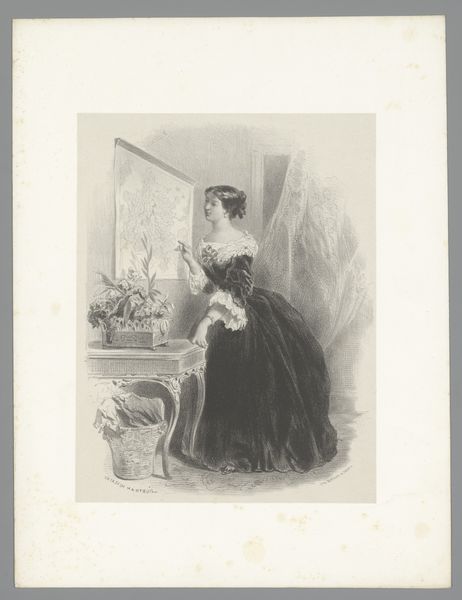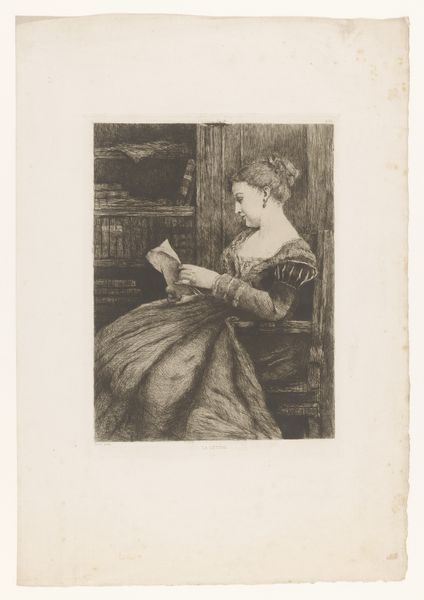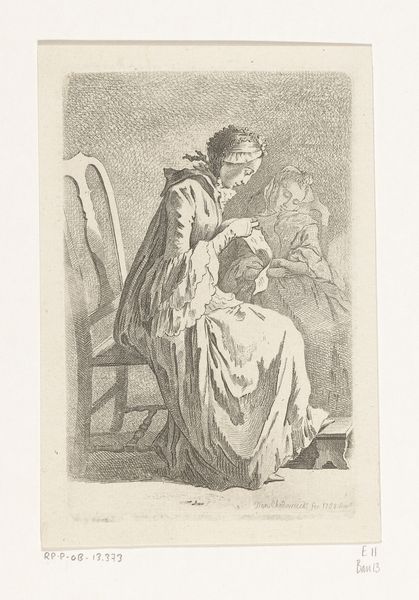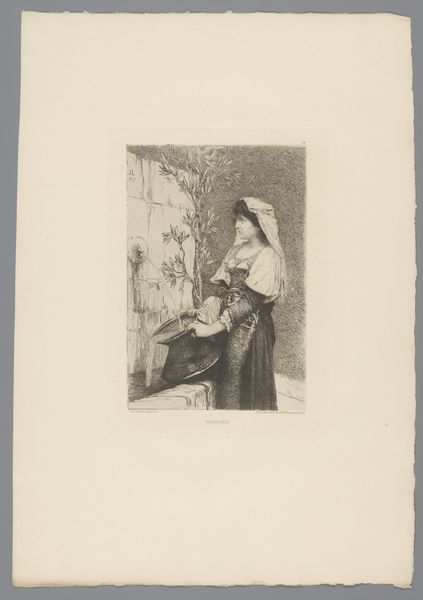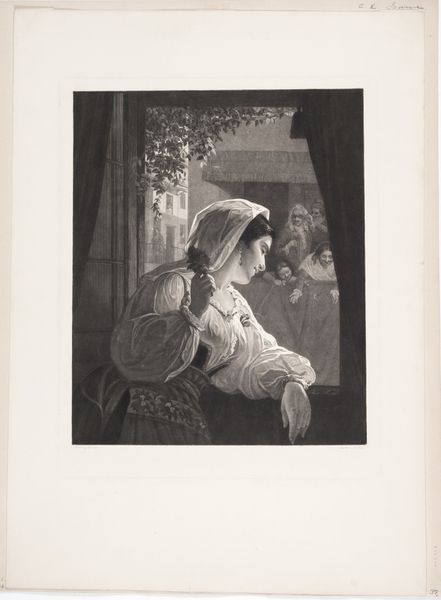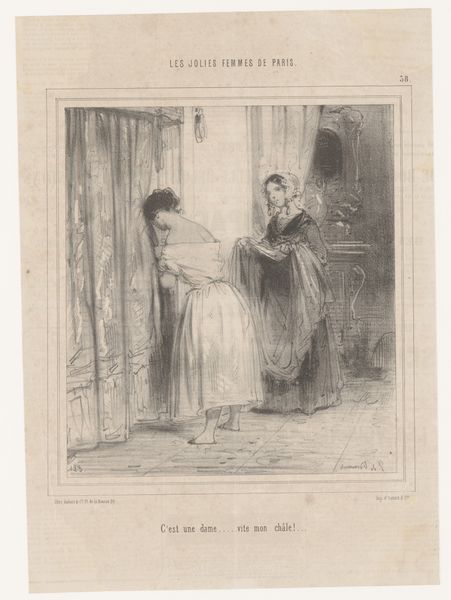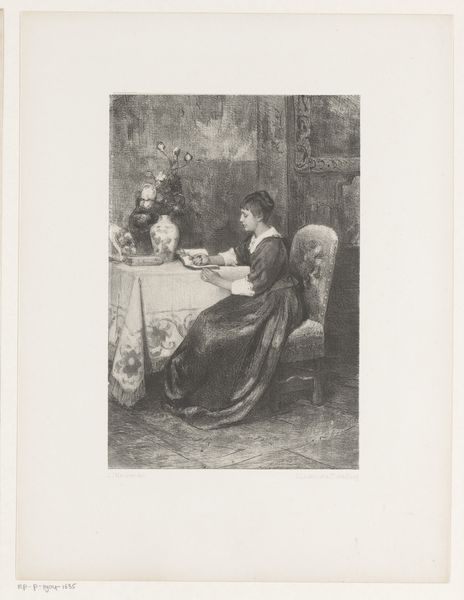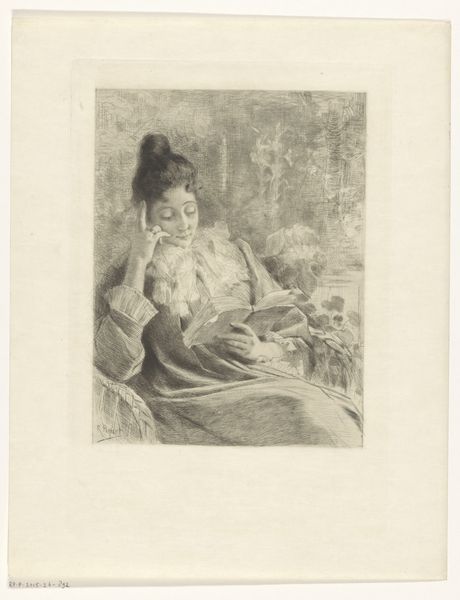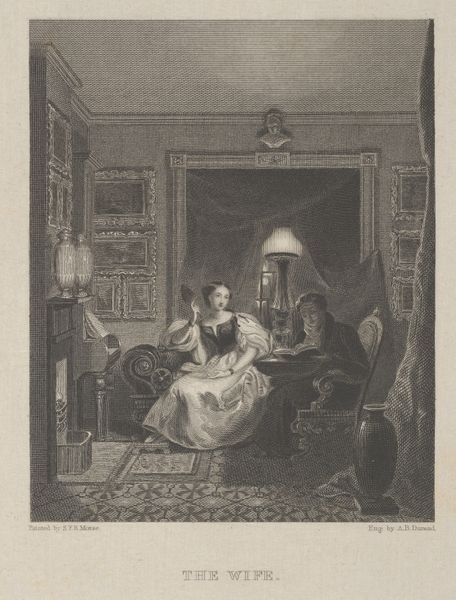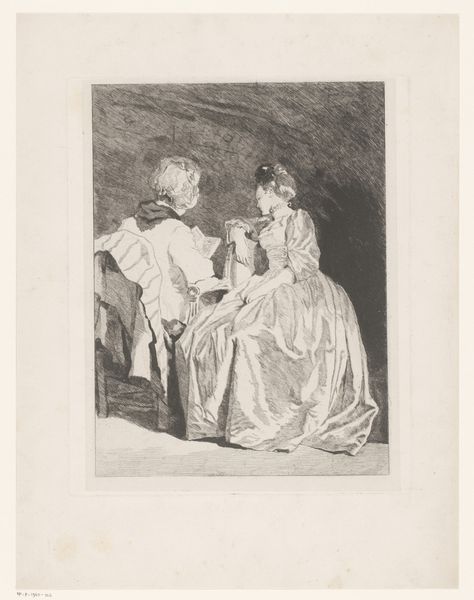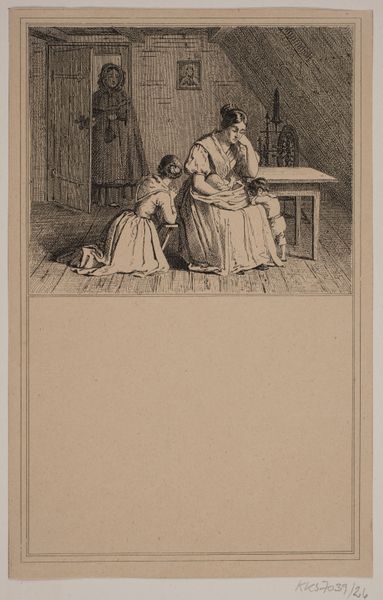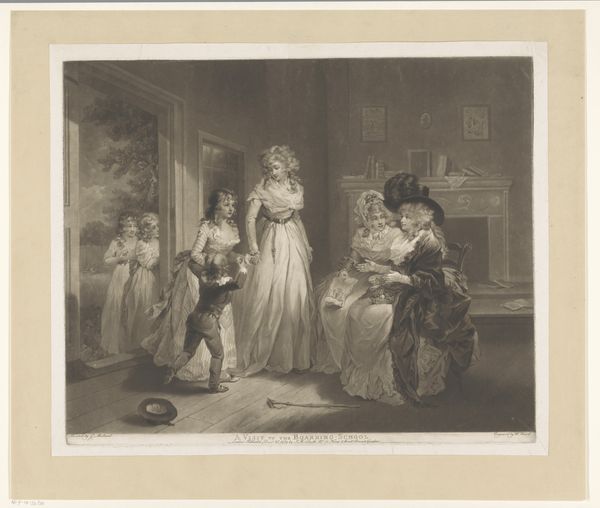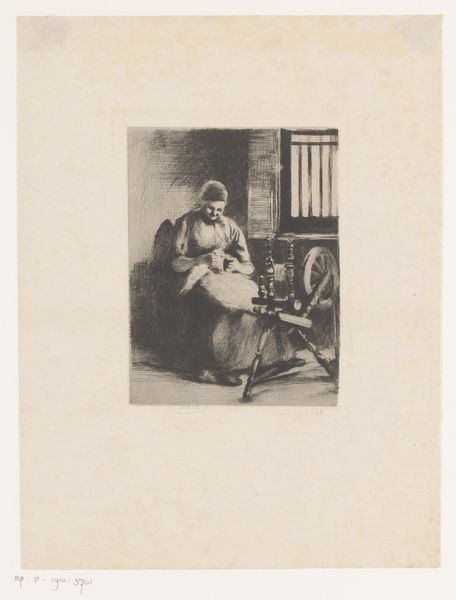
print, engraving
#
narrative-art
# print
#
romanticism
#
19th century
#
genre-painting
#
engraving
Dimensions: height 551 mm, width 399 mm
Copyright: Rijks Museum: Open Domain
Editor: Here we have William Ward's "Jonge vrouwen ontdekken dat een kat de vogel uit de kooi heeft gevangen," or as it's titled in English, "The Disaster", an engraving from 1789. It's such a vivid snapshot of distress! The ruined birdcage, the cat perched triumphantly... what catches your eye? Curator: It's fascinating how this image encapsulates the cultural anxieties around domesticity and vulnerability. Look at the pose of the women – the elder shielding the younger, a symbolic attempt to safeguard innocence from the harsh realities represented by the cat's successful hunt. Notice the musical instrument in the background? Editor: Yes, the pianoforte. Is it relevant? Curator: Certainly. In this period, musical skill was associated with virtue and refinement for women. Juxtapose this ideal with the chaotic scene before us – the disrupted cage, scattered trinkets – and what do you see? What does the disrupted cage become, symbolically? Editor: Loss of innocence, maybe? Shattered expectations? The women are visibly upset, so... something valued has been destroyed. Curator: Precisely! And the cat, a symbol often associated with feminine wiles or even untamed nature, here acts as the agent of disruption. Consider how such imagery reinforced societal expectations and fears. This disaster is as much psychological as it is physical. The bird's vulnerability is representative of what women might expect in a patriarchal society. Editor: I never considered the cat beyond just a mischievous pet, so that really changes my perception of the image. I guess there's a lot of social commentary packed into such a seemingly simple scene! Curator: Exactly. It's a small domestic tragedy, but it reflects much larger concerns about order, control, and the precariousness of innocence within society. These symbols were very intentional on the part of the artist.
Comments
No comments
Be the first to comment and join the conversation on the ultimate creative platform.
